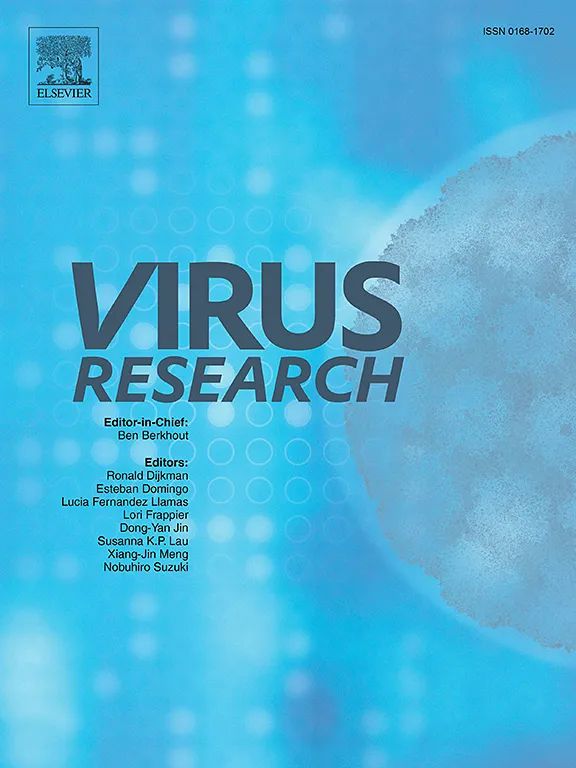开发针对克里米亚-刚果出血热病毒(CCHFV)的全基因组测序方法。
IF 2.5
4区 医学
Q3 VIROLOGY
引用次数: 0
摘要
克里米亚-刚果出血热(CCHF)是最流行的人类蜱媒病毒性疾病,据报道病死率高达 30% 或更高。该病毒含有三段式负义 RNA 基因组,包括小段(S)、中段(M)和大段(L),分别编码核蛋白(NP)、糖蛋白前体(GPC)和病毒 RNA 依赖性 RNA 聚合酶(RDRP)。CCHFV 是基因最多样化的虫媒病毒之一,根据 S 段系统发育分析,它有七个不同的谱系,分别以首次报道的地区命名。由于该病毒的基因差异很大,因此很难在测序前开发出一种单一的靶向套叠 PCR 策略来富集病毒核酸,此前我们已经开发并验证了一种针对欧洲 1 基因系的套叠 PCR 富集方法。我们开发了一种有针对性的探针杂交捕获方法,并在不同基因系(包括欧洲 1 系、欧洲 2 系、非洲 2 系和非洲 3 系)的 CCHFV 临床和细胞培养材料上验证了该方法的性能。该方法的参考覆盖率超过 95%,测序深度至少为 10 倍。虽然我们只能通过捕获杂交方案从测试的欧洲 1 号临床样本中恢复一个完整的基因组序列,但这些数据证明了该方法适用于不同的 CCHFV 基因系。CCHFV 是一种重要的蜱媒人类病原体,地理分布广泛。环境和人为因素导致 CCHFV 传播速度加快。开发从不同基因系的病毒中恢复 CCHFV 序列的策略,对于监测新地区病毒的存在以及在公共卫生响应中进行 CCHFV 分子监测以快速检测、诊断和描述目前流行的毒株至关重要。本文章由计算机程序翻译,如有差异,请以英文原文为准。
Development of targeted whole genome sequencing approaches for Crimean-Congo haemorrhagic fever virus (CCHFV)
Crimean-Congo haemorrhagic fever (CCHF) is the most prevalent human tick-borne viral disease, with a reported case fatality rate of 30 % or higher. The virus contains a tri-segmented, negative-sense RNA genome consisting of the small (S), medium (M) and large (L) segments encoding respectively the nucleoprotein (NP), the glycoproteins precursor (GPC) and the viral RNA-dependent RNA polymerase (RDRP). CCHFV is one of the most genetically diverse arboviruses, with seven distinct lineages named after the region they were first reported in and based on S segment phylogenetic analysis.
Due to the high genetic divergence of the virus, a single targeted tiling PCR strategy to enrich for viral nucleic acids prior to sequencing is difficult to develop, and previously we have developed and validated a tiling PCR enrichment method for the Europe 1 genetic lineage.
We have developed a targeted, probe hybridisation capture method and validated its performance on clinical as well as cell-cultured material of CCHFV from different genetic lineages, including Europe 1, Europe 2, Africa 2 and Africa 3. The method produced over 95 % reference coverages with at least 10x sequencing depth. While we were only able to recover a single complete genome sequence from the tested Europe 1 clinical samples with the capture hybridisation protocol, the data provides evidence of its applicability to different CCHFV genetic lineages.
CCHFV is an important tick-borne human pathogen with wide geographical distribution. Environmental as well as anthropogenic factors are causing increased CCHFV transmission. Development of strategies to recover CCHFV sequences from genetically diverse lineages of the virus is of paramount importance to monitor the presence of the virus in new areas, and in public health responses for CCHFV molecular surveillance to rapidly detect, diagnose and characterise currently circulating strains.
求助全文
通过发布文献求助,成功后即可免费获取论文全文。
去求助
来源期刊

Virus research
医学-病毒学
CiteScore
9.50
自引率
2.00%
发文量
239
审稿时长
43 days
期刊介绍:
Virus Research provides a means of fast publication for original papers on fundamental research in virology. Contributions on new developments concerning virus structure, replication, pathogenesis and evolution are encouraged. These include reports describing virus morphology, the function and antigenic analysis of virus structural components, virus genome structure and expression, analysis on virus replication processes, virus evolution in connection with antiviral interventions, effects of viruses on their host cells, particularly on the immune system, and the pathogenesis of virus infections, including oncogene activation and transduction.
 求助内容:
求助内容: 应助结果提醒方式:
应助结果提醒方式:


